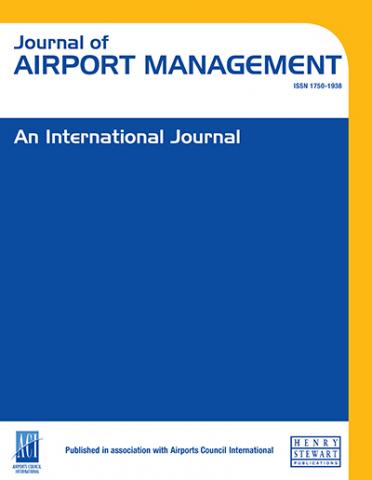"I was pleased to see that the new journal is aimed at managers in the field to better understand the benefits of supply chain management thinking. The journal is focused on delivering these developing best practices to practicing managers. There is a vast gulf between academic’s theory and managerial practice [and] your journal should be a timely addition."
Airport buildings: A key opportunity for sustainability in aviation
Click the button below to download the full text of the article.
Abstract: The aviation industry is under increasing pressure to reduce its greenhouse gas (GHG) emissions, and advancing sustainable airport facilities is an important and highly visible way to demonstrate progress. Citizen groups and scientific reports have both highlighted the increasing share of global GHG emissions due to aviation and have called for everything from policy changes to constrain aviation emissions growth, to a movement for passengers to abstain from flying.With the social licence to operate being called into question, the aviation industry must demonstrate that it takes concerns around sustainability seriously and that it is addressing them in order to maintain public support. A common misconception exists that because aircraft emissions are so significant, sustainability efforts at airports are negligible. Airport GHG emissions are, however, substantial, stemming from energy use in buildings, ground service equipment and specialised equipment. San Francisco International Airport (SFO), to take an example, where the authors have consulted on sustainability, uses as much energy as its three neighbouring towns combined. Nor do airport environmental impacts stop at GHG emissions — airport development and operations can lead to substantial land-use changes, health impacts on millions of passengers and airport workers and noise impacts on neighbouring communities. The secondary impacts of the enormous quantity of materials used in construction of airfields and buildings can all be felt on the local, regional and global scales. Airports can best demonstrate their commitment to sustainability through reference to the United Nations Sustainable Development Goals (SDGs): a global plan of action to protect the environment while promoting the economic growth needed to lift people out of poverty and reduce inequalities between and within countries. The SDGs have received commitments of support from civil society non-governmental organisations, national, state, and local governments and private companies around the world following the most extensive public outreach process ever undertaken, involving over 3 million people. This paper explores how sustainability fits within the SDGs across four categories — energy, water, construction materials and indoor environmental quality — and presents real-world case studies where strategies addressing these topics have been incorporated.
Keywords: airport sustainability, SDGs, Sustainable Development Goals, energy, water, construction, materials, indoor environmental quality, Mexico City Airport, San Francisco International Airport (SFO), John Wayne Airport (SNA), Brisbane Airport (BNE)
Gray Bender is a senior consultant and project manager in Arup’s San Francisco office, where he works on the Energy & Sustainability team. His work spans across the scale of the built environment, developing energy and sustainability approaches for cities, master plans, and major infrastructure and building projects. This includes a combination of developing city-scale sustainability frameworks and strategic planning, as well as high performance building design and energy analysis.
Raphael Sperry is a sustainability consultant for buildings and helps lead the San Francisco Energy & Sustainability team. He has facilitated the design of low-energy buildings and applied the LEED rating system to numerous commercial and institutional building owners. He has also pioneered sustainability applications in transportation projects, especially airports. He helps lead Arup’s effort to support the United Nations (UN) Sustainable Development Goals in partnership with its clients.



